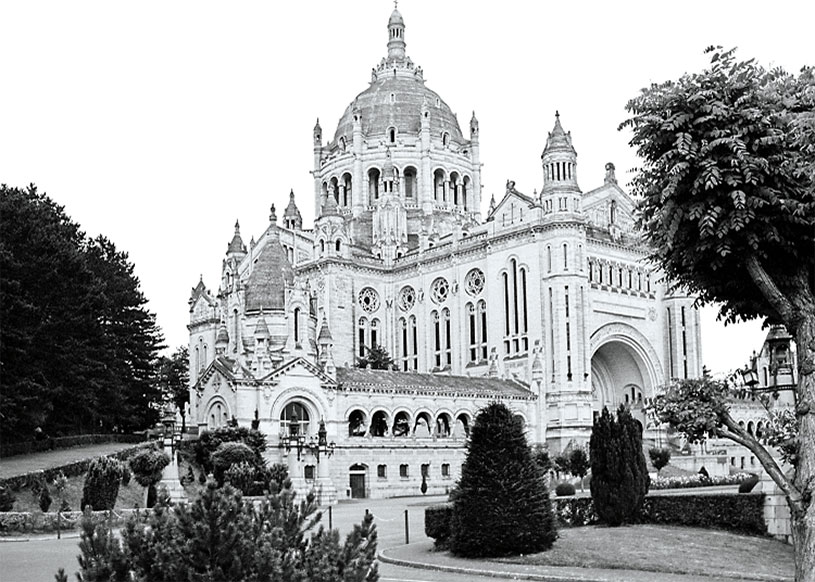
Marie-Françoise-Thérèse Martin who became Sainte Thérèse of Lisieux was born into a lacemaking family in Alençon in 1873. She entered the Carmelite Convent of Lisieux, fifty miles north of Alençon, when she was only fifteen on 9 April 1888 and she died there in 1897. Sainte Thérèse is one of the best-loved saints of our time and her imposing white basilica now dominates the Lisieux skyline. Considered the second most important pilgrimage town in France, Lisieux is visited by thousands of Catholic pilgrims every year.
Sainte Thérèse of Lisieux birthplace and childhood home in Alençon is retained as a monument to this extraordinary young woman and was looked after by nuns at the time I visited. To one side of the house there is a chapel and her parents’ bedroom, which includes the bed in which Sainte Thérèse was born. The living room displays objects that were used by her family, including Thérèse’s childhood diary. Thérèse was often unwell and died of tuberculosis when only twenty-four, suffering agonies in the final stages of her illness. After her death, the church directed that her autobiography should be published. Printed and distributed a year after her death to an initially very limited audience, the impact of The Story of a Soul was significant. Pope Pius XI made her the ‘star of his pontificate’, signing the decree for the opening of the process of canonization on 10 June 1914 and she was canonised in 1925, twenty-eight years after her death.


